
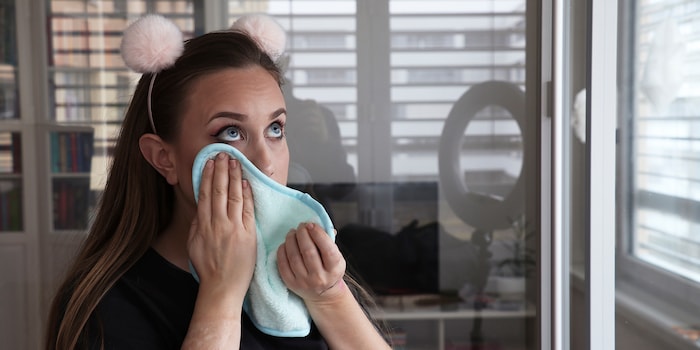
How to remove make-up the eco-friendly way
After visiting zero waste advocate Carla Opetnik, I decided to think more carefully and eco-consciously about my beauty and hygiene routine. Today it’s time to tackle zero waste make-up remover.
Let’s first take a look at my current routine. Right now I use on average five cotton wool pads each day to make sure I get all my make-up off. Over the course of a week, that’s about 35 pads. And if you ask me, that’s 35 too many. I also have to factor in all the cotton buds I use to remove stubborn bits of mascara from my lash line. I exiled the bathroom bin to the basement some time ago. Given all this rubbish, I’d just have to be emptying it every day anyway.
In all honesty, though, a few weeks ago I wasn’t really bothered by the number of cotton wool pads I went through as part of my evening beauty regime. The main thing was my face was squeaky clean. But then I visited Carla Opetnik. Her lifestyle means she produces less waste and where possible, she opts for natural alternatives. Inspired by her approach, I’m now on the hunt for a natural alternative to make-up remover. Face-Halo’s reusable pads are all the rage. And I can confirm they do remove make-up with just water pretty well. The problem is they’re not yet available in Switzerland.
So I went back to the drawing board – aka our online shop – and I came across this product:
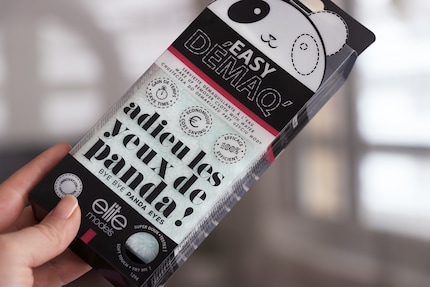

It’s easy in theory
Elite’s «Easy Démaq’» is a microfibre cloth that’s meant to remove all your make-up with just water and it’s supposed to be faster than traditional methods. Basically, I’d be saving myself cotton wool pads, make-up remover and time – oh yeah, and also money. The cloth has two sides that don’t seem to look or feel any different. But they serve separate purposes. One side is marked with a label so you know it’s for removing make-up, while the other is meant to be used like a scrub. This second exfoliating step of the process makes sure there are no impurifications left on your face.
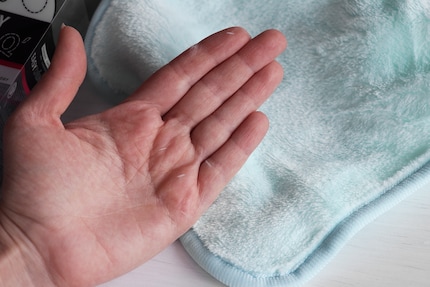
Is it as easy as wipe and go?
I’ve barely got it out the packet and bits of fluff are already swirling about my face. I shake out the 20 cm × 25 cm piece of material again, which prompts another fibre shower. I’m not too impressed, especially as I’ve only just hoovered. But anyway, let’s get on with the test. I’ve got on a full face of make-up, including waterproof mascara and eyeliner, which I doubt I’ll be able to get off. I turn on the hot tap and hold the cloth under it until it has absorbed enough water. It takes a while. I then prep by squeezing it out gently. Right, here goes… I start by wiping the make-up removal side across my face and notice it struggles with just the foundation despite the fact there’s plenty of liquid in the cloth. I have to rub pretty hard and even then I can hardly get any of my war paint off.
Don’t get me started on trying to remove my lipstick. Red pigment is a bit stubborn so it can pose something of a challenge even for standard make-up removers. My microfibre cloth is very much out of its depth. And it’s the same story with my mascara and eyeliner. To top it all, my face is covered in little fibres. They’ve even got stuck in my eyelashes. This is an emergency, so I reach for my micellar water and drop some onto the cloth to put it out its misery. It instantly does a better job – note I say better, not satisfactory. All in all, I end up getting 40% of my make-up off. Using the other side of the cloth doesn’t make much difference.
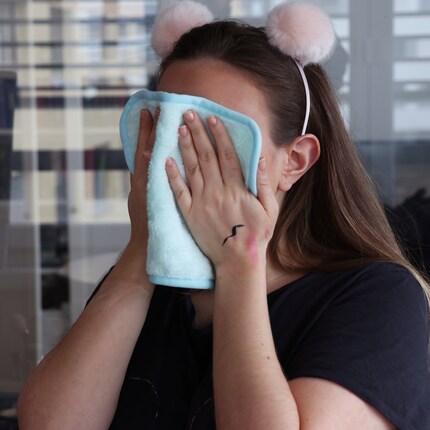
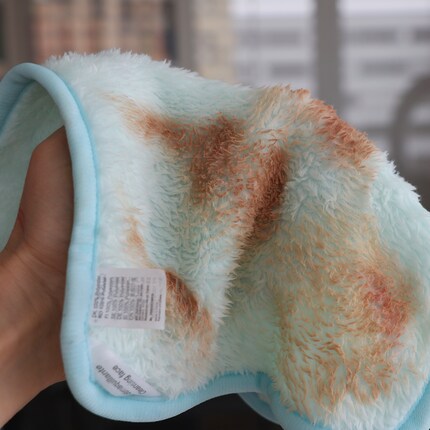
After using the cloth it looks distinctly unappetising. It’s not as though I want to eat it, but making it in a dark colour wouldn’t be a bad idea. It says on the packaging that you can wash it by hand or in the machine after use. Unfortunately, rinsing it with soap didn’t get the stains off. And I’m not too keen on putting it in the machine with so much make-up on it, as I’m worried it’ll ruin my light-coloured washing. So I’m a bit grossed out about using the cloth again.
Verdict
The Elite microfibre cloth is far from eco-friendly. It moults quite a lot of polyester fibres, which go down the drain and end up in the water cycle. What you’re looking at is an example of microplastics. But is it going to save you time removing your make-up? Actually, no. Far from it. It took me three times as long as normal to remove a fraction of my war paint. I have a feeling the fibres are too soft to get the job done. While I appreciate this method probably won’t ever work very well for taking off waterproof products, the least I’d expect is for my skin to be clean afterwards. So for me, the search for a sustainable alternative continues.
As a massive Disney fan, I see the world through rose-tinted glasses. I worship series from the 90s and consider mermaids a religion. When I’m not dancing in glitter rain, I’m either hanging out at pyjama parties or sitting at my make-up table. P.S. I love you, bacon, garlic and onions.


